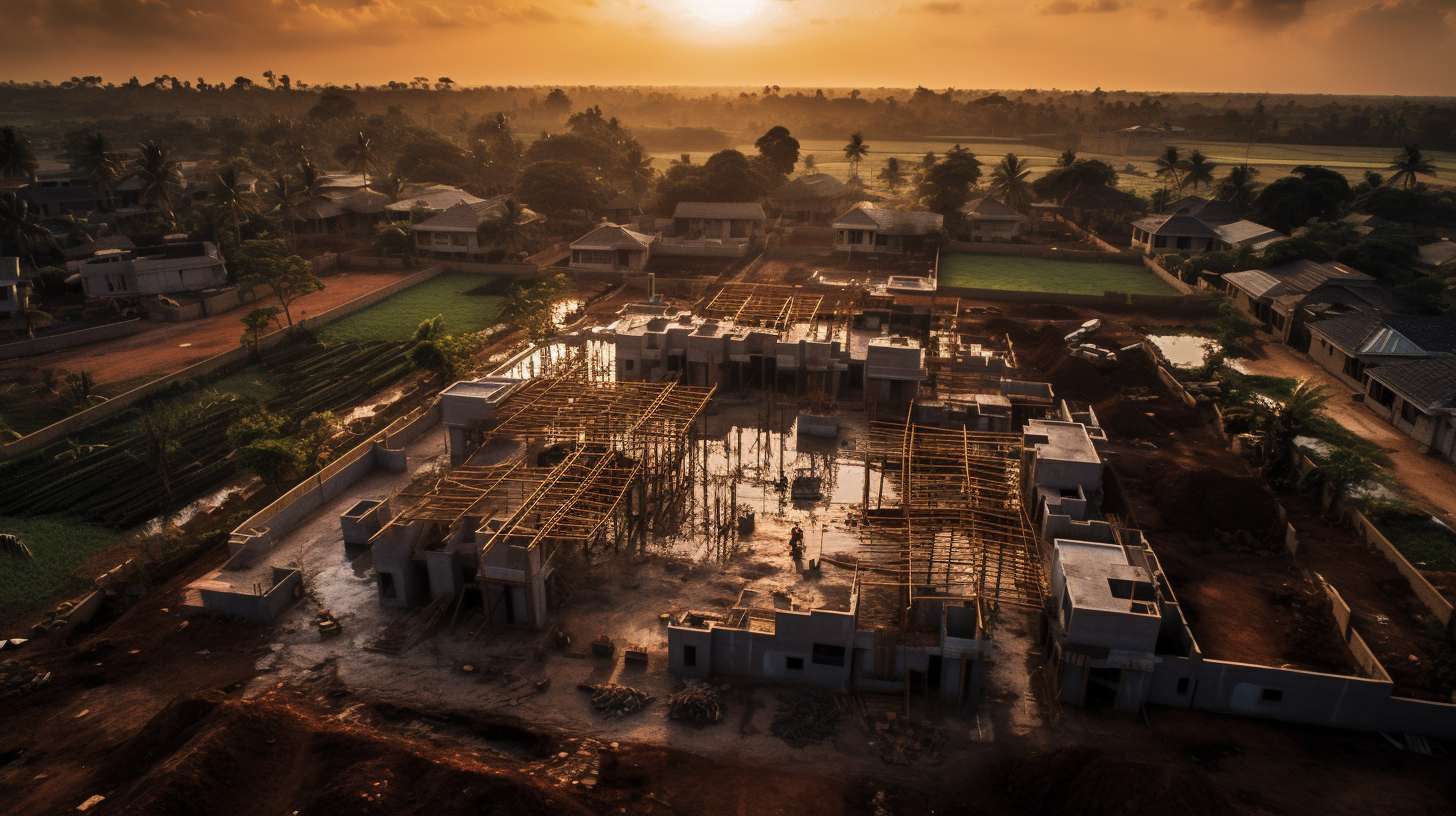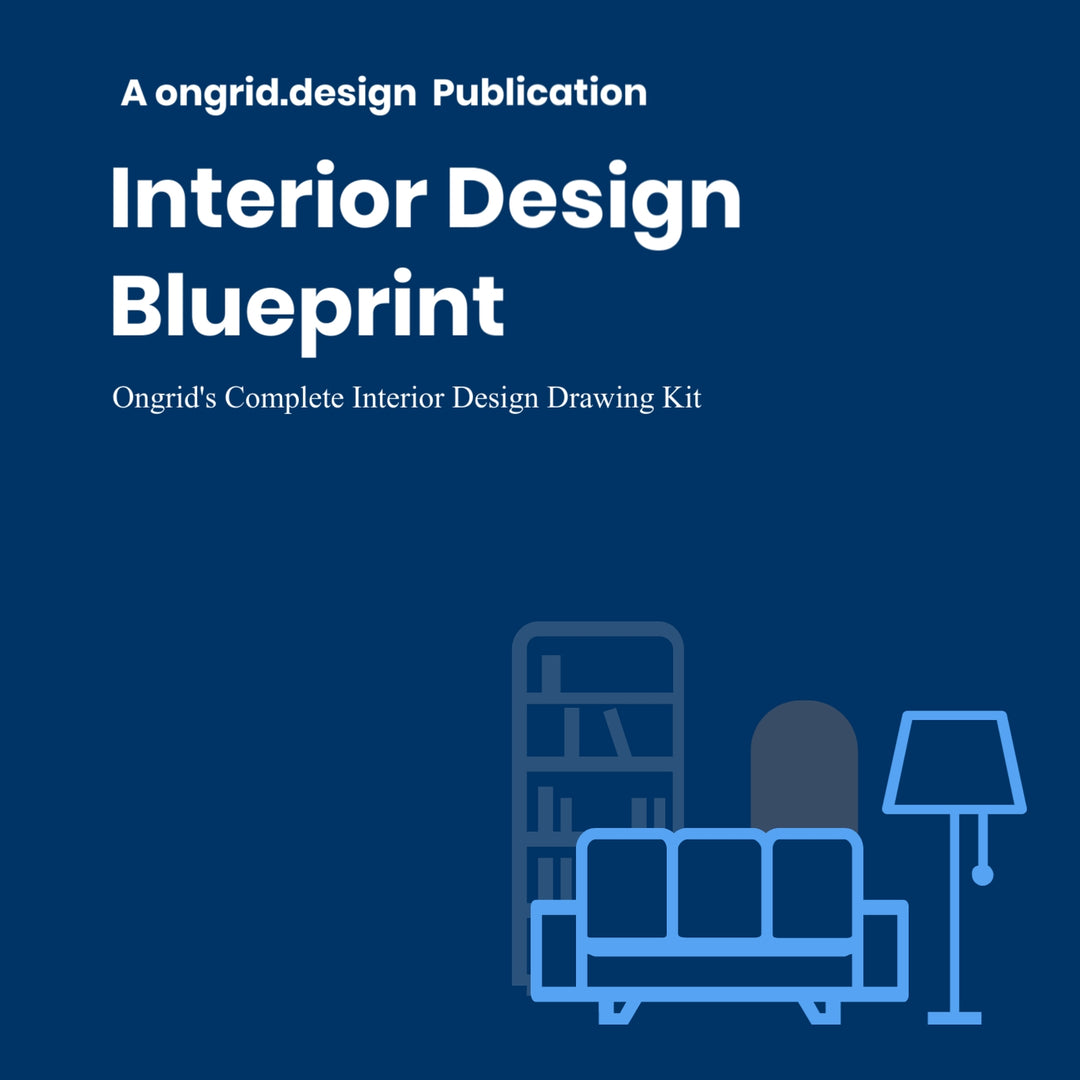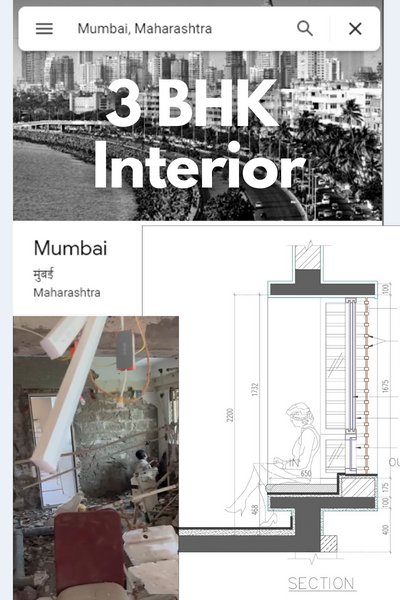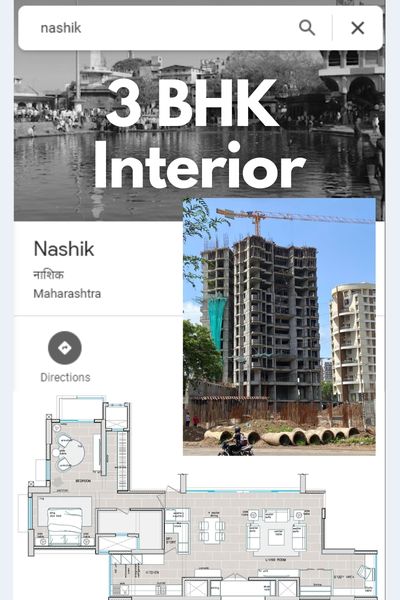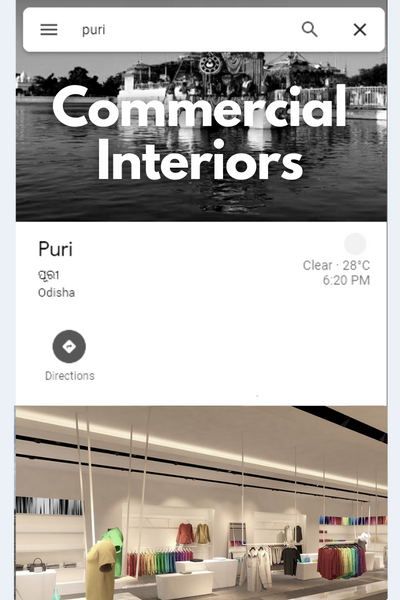Best Mixed Use Building Design: Shop Front with Pent House

Table of Contents
- What Is a Modern House with Shop Attached Design?
- Key Elements of Shop Front Elevation and Shop Home Designs
- How Do Shop House Designs Ensure Comfort?
- A Virtual Walkthrough of Our Mixed-Use Design Project
- How Is Front Elevation Design for Shop Incorporated into a Residential Space?
- What Do Ground Floor Shop and First Floor House Plans Look Like?
- What Does a Modern Shop and Residence Design Look Like in India?
- How to Decorate a Residential Space within a Mixed-Use Design?
- The Future of Urban Living and Design
- Shape Your Urban Living Experience with OnGrid
The Dawn of a New Design Era: What Is a Modern House with Shop Attached Design?
The concept of a modern house with a shop attached, often termed as a "mixed-use design," is an architectural solution that has gained momentum in recent years. It addresses the evolving needs of urban lifestyles, where living and working spaces are not just functional entities but are closely tied to our quality of life, convenience, and economic viability.
Mixed-use design is an architectural trend that harmonizes commercial and residential spaces within the same building structure. This innovative concept isn't just about saving space or convenience; it's about creating a lifestyle that aligns with the fast-paced, multi-tasking world we live in.
A modern house with a shop attached design can be particularly attractive in areas with high commercial potential, where owning a commercial property can be a valuable asset. But this concept goes far beyond the economic standpoint. It represents a holistic approach to urban design that recognizes our changing life rhythms, the need for decreased commuting times, and a balanced lifestyle that blends work and personal life.
Ongrid.design has embraced this concept in several projects, including our mixed-use design in Satara, India. This project showcases a perfect blend of business and living quarters, resulting in a functional, aesthetically pleasing, and economically advantageous design. We've focused on maintaining a balance between the shop's commercial needs and the residential unit's comfort, offering a unique lifestyle opportunity.
Integrating Business Needs: Key Elements of Shop Front Elevation and Shop Home Designs
 In a mixed-use building design, the shop front elevation is the face of the business. It should not only appeal to potential customers but also align seamlessly with the residential aspect. Achieving this balance requires thoughtful design, careful planning, and an eye for detail.
In a mixed-use building design, the shop front elevation is the face of the business. It should not only appeal to potential customers but also align seamlessly with the residential aspect. Achieving this balance requires thoughtful design, careful planning, and an eye for detail.
A crucial aspect of the shop front elevation design involves incorporating elements that make the shop inviting and visually appealing. Our Satara project features a modern and minimalist elevation design, which is trendy, attractive, and in harmony with the residential portion. Large, glass panel windows give potential customers a glimpse of the shop's interior, while the clean, uncluttered design communicates professionalism and modernity.
In designing the shop home, we took into consideration the specific needs and functionalities of both the commercial and residential components. We took care to design the shop space to be spacious, accessible, and optimized for the best commercial usage. At the same time, we prioritized privacy, comfort, and a homely vibe for the residential area.
Our aim was to create a seamless flow between the business and living quarters, providing an integrated solution that caters to the modern urban dweller's needs. This approach not only optimizes space usage but also offers unique opportunities for lifestyle enhancement, from the convenience of having one's business at their doorstep to the financial advantages that come with it.
In the upcoming sections, we will delve deeper into the architectural and aesthetic intricacies that make the fusion of commercial and residential spaces possible, maintaining both functionality and appeal.For more on our approach to commercial design, check out our comprehensive guide to commercial space planning.
Keep reading as we further explore this intriguing architectural concept, providing more insights into the evolution of mixed-use design, its impact on our lifestyles, and its potential to shape future urban landscapes.
Designing Homes in a Commercial Environment: How Do Shop House Designs Ensure Comfort?
 Creating a comfortable and inviting home within a commercial setup requires careful planning, innovative design solutions, and meticulous execution. The core challenge is to ensure that the residential unit remains a haven of tranquility and privacy, unaffected by the commercial activities on the ground floor.
Creating a comfortable and inviting home within a commercial setup requires careful planning, innovative design solutions, and meticulous execution. The core challenge is to ensure that the residential unit remains a haven of tranquility and privacy, unaffected by the commercial activities on the ground floor.
In our Satara mixed-use design project, we approached this task by putting ourselves in the residents' shoes. We asked: How can we maximize natural light? How can we ensure privacy without compromising the home's open feel? How can we foster a sense of tranquility in a bustling commercial setting?
Our answers to these questions led us to devise a design scheme that capitalized on space, layout, and architectural features. We deliberately placed the residential entrance separate from the commercial space, which ensured that customers don't intrude upon the residents' personal space.
Inside the residential unit, we made strategic use of barriers—like walls and screens—to create distinct living areas, maintaining privacy and peace within the home. At the same time, we implemented an open floor plan where it made sense, such as in the common living areas, to encourage a sense of spaciousness and fluidity.
Ventilation and light were other key considerations. Large windows were installed to draw in natural light, creating a bright and cheerful interior. At the same time, these windows were designed to minimize noise and heat from the outside, ensuring a comfortable indoor environment.
The comfort of the residents also extended to the selection of materials and finishes. We chose materials that not only added aesthetic value but also contributed to creating a cozy, homely feel. Soft textiles, warm wood tones, and calming colors were some of the elements that went into creating a home that's inviting, comfortable, and private, despite being part of a commercial setup. If you're interested in residential design, you might find value in our post on essential home project budget planning.
Bringing Ideas to Life: A Virtual Walkthrough of Our Mixed-Use Design Project
 Understanding the intricacies of a mixed-use building design might seem daunting without seeing it come to life. That's why we've created a video walkthrough that visually demonstrates the balance between commercial and residential spaces in our Satara project.
Understanding the intricacies of a mixed-use building design might seem daunting without seeing it come to life. That's why we've created a video walkthrough that visually demonstrates the balance between commercial and residential spaces in our Satara project.
The video begins by showcasing the shop front elevation, offering viewers a glimpse into the welcoming and professional exterior of the shop. As the camera moves through the shop, viewers can see how space has been optimized to create an inviting and customer-friendly environment. The large windows, clean lines, and strategic use of lighting add to the shop's modern aesthetic.
As the video transitions to the residential space, viewers will see how the home is a distinct entity from the commercial space. Despite being in the same building, the residential unit offers a stark contrast with its warm, cozy, and tranquil ambiance. The distinct entryway, the smart use of barriers and open spaces, and the strategic placement of windows all contribute to this effect.
The video walkthrough aims to provide viewers with a tangible understanding of how mixed-use building design creates a harmonious balance between commercial and residential spaces. It showcases how thoughtful design can overcome challenges to create a building that serves dual purposes, without compromising on comfort, privacy, or functionality.
Stay tuned as we delve into more architectural features of our mixed-use design project in the upcoming sections.
Mastering Architectural Fusion: How Is Front Elevation Design for Shop Incorporated into a Residential Space?
 The front elevation design of a shop is an architectural visualisation of the shop's façade as viewed from the front. It plays a crucial role in defining the shop's character and appeal, both of which can significantly influence a business's success. When the shop is part of a mixed-use building, the front elevation design should integrate seamlessly with the residential space above while maintaining a distinct identity.
The front elevation design of a shop is an architectural visualisation of the shop's façade as viewed from the front. It plays a crucial role in defining the shop's character and appeal, both of which can significantly influence a business's success. When the shop is part of a mixed-use building, the front elevation design should integrate seamlessly with the residential space above while maintaining a distinct identity.
In our Satara mixed-use design project, we strived to harmonize the shop front elevation with the overall architectural aesthetic of the building. This was accomplished by carefully coordinating the choice of materials, color palettes, and architectural features, ensuring that the transition from the commercial space to the residential one is visually coherent and pleasing.
The shopfront uses large glass windows, allowing ample natural light to flood the interior, providing a bright and welcoming environment for customers. The use of glass also creates a sense of transparency and openness, inviting passers-by to look in and potentially draw them inside. The frontage's clean lines and minimalistic design convey a sense of modern sophistication, which is in harmony with the contemporary design aesthetic of the residential unit above.
Simultaneously, the front elevation design maintains the shop's individuality and purpose. We used signage and unique lighting solutions to emphasize the shop's entrance, subtly distinguishing it from the residential entrance. These design elements work together to create a balanced and integrated aesthetic, promoting both the commercial and residential aspects of the building.
Envisioning Mixed-Use Spaces: What Do Ground Floor Shop and First Floor House Plans Look Like?
 Designing the layout for a mixed-use building requires careful thought and planning. The ground floor shop and the first floor house need to co-exist harmoniously, with each space fulfilling its unique needs without interfering with the other.
Designing the layout for a mixed-use building requires careful thought and planning. The ground floor shop and the first floor house need to co-exist harmoniously, with each space fulfilling its unique needs without interfering with the other.
In our Satara project, we designed the ground floor shop to be open and versatile, capable of accommodating different types of businesses. The shop layout prioritizes fluid circulation and functionality, with a well-defined customer pathway, ample storage, and strategically placed lighting to highlight products or services.
Transitioning to the residential unit on the first floor, the focus shifts to creating a warm, inviting, and functional home. The layout encompasses a living area, bedrooms, kitchen, and bathrooms, each distinctly defined yet flowing into one another, maintaining an open and spacious feel.
The house layout ensures natural light penetrates deep into the home, enhancing the living experience. The placement of windows not only maximizes light and ventilation but also provides scenic outdoor views, adding to the home's appeal.
Linkages between the shop and the house have been minimized, with separate entrances for each. This design choice maintains the privacy and tranquility of the residential unit while ensuring the smooth operation of the commercial unit below.
By thoughtfully planning the layouts for the shop and the house, we have created a mixed-use building that exemplifies versatility and functional design, providing an innovative solution to urban living. In the next section, we'll delve deeper into modern shop and residence designs in India, and how our project aligns with this design paradigm.
If you're intrigued by this design, check out our article on building plans and home loans, where we discuss the financial aspects of such projects.
Blending Commercial and Residential Aesthetics: What Does a Modern Shop and Residence Design Look Like in India?
 Indian architecture and design are evolving, adapting to the multifaceted demands of urbanization while remaining firmly anchored to its rich cultural heritage. This evolution is especially visible in the design of modern shops and residences, where innovation and tradition intertwine, creating designs that cater to modern living requirements while reflecting India's vibrant culture.
Indian architecture and design are evolving, adapting to the multifaceted demands of urbanization while remaining firmly anchored to its rich cultural heritage. This evolution is especially visible in the design of modern shops and residences, where innovation and tradition intertwine, creating designs that cater to modern living requirements while reflecting India's vibrant culture.
In the context of India, modern shop and residence designs often exhibit a confluence of traditional architectural elements, local materials, and modern design principles. They are being seen increasingly in bustling cities and growing towns, offering a compelling solution to the need for space optimization in densely populated areas. Such buildings are a testament to the adaptability and innovation of Indian design, meeting the needs of businesses and families in one dynamic structure.
In our Satara project, we aimed to capture this spirit of Indian design, creating a mixed-use building that respects local aesthetics while offering a modern living and working environment. The shop front elevation, for instance, incorporates traditional elements such as awnings and balconies, which provide shade and add visual interest. At the same time, its clean lines and minimalist approach echo the ethos of modern design.
The residential unit, in contrast, leans more heavily into traditional Indian aesthetics, featuring a courtyard-style central living area – a nod to traditional Indian homes. The use of local materials and design elements, such as locally-sourced wood and stone, further embed the building in its context. Despite this, the interior design remains modern, offering a comfortable and stylish living space that caters to contemporary lifestyles.
For more insights into our design approach, explore our comprehensive guide on achieving a designer look without breaking the bank.
Curating Your Ideal Home: How to Decorate a Residential Space within a Mixed-Use Design?
 Decorating a residential space in a mixed-use building can be an exciting endeavor. This setup offers opportunities for creativity, allowing the resident to create a personalized living space that reflects their style while acknowledging the commercial character of the building.
Decorating a residential space in a mixed-use building can be an exciting endeavor. This setup offers opportunities for creativity, allowing the resident to create a personalized living space that reflects their style while acknowledging the commercial character of the building.
In the Satara project, we propose a simple, minimalist approach to the interior design of the residential unit. This is in line with the overall architectural style of the building and allows the stunning natural views and abundant daylight to take center stage.
For a minimalist aesthetic, the use of neutral color palettes, such as whites, beiges, and greys, creates a serene and calming environment. Functional, well-designed furniture pieces with clean lines reinforce the contemporary feel, while textures and patterns can be introduced through rugs, throws, and cushions for added warmth.
We recommend selecting decor items from our Amazon affiliate selection that complements the overall design scheme. For instance, statement lighting fixtures can be used to add a touch of sophistication, while indoor plants can introduce a sense of freshness and vitality.
Decorating a residential space in a mixed-use building requires balance – it's important to create a space that feels distinctly residential while subtly mirroring the design language of the commercial space below. This harmony fosters a cohesive aesthetic and enhances the overall living experience within a mixed-use building.
Conclusion: The Future of Urban Living and Design
Urbanization, population growth, and the desire for efficient living and working spaces are catalyzing a shift in architectural trends. The mixed-use design is a testament to this shift, representing an innovative solution to these evolving challenges. Incorporating commercial and residential functionalities in one structure, it is an epitome of functionality, sustainability, and aesthetic design, marking a significant advancement in urban architecture.
In the context of India, mixed-use design presents a compelling alternative to traditional standalone residential and commercial buildings. It addresses space limitations in densely populated areas, provides convenient access to amenities and workspaces, and promotes a sense of community by fostering interactions between residents and business owners.
Our Satara project is an example of how this innovative design approach can be implemented. By harmoniously blending a shop and a residence in a single structure, we've created a functional and visually appealing building that meets the needs of modern urban dwellers. Its design elements, from the shop front elevation to the residential interior, reflect a seamless integration of commercial and residential aesthetics, while also providing a comfortable and enjoyable living environment.
As we look towards the future, we are excited about the possibilities that mixed-use design offers. It represents a significant stride in urban living and design, promising a future where buildings are not just spaces for living or working, but integrated communities that enrich the urban fabric.
We invite you to explore more of our innovative designs and learn how we are reshaping urban living one building at a time.
Shape Your Urban Living Experience with OnGrid
Are you ready to embrace the future of urban living? Do you have questions about mixed-use design, or are you curious about how it might work for your own project? We are here to help. With a team of experienced architects and designers, we at OnGrid are passionate about creating spaces that not only meet your needs but also enrich your life.
If you're planning a residential or commercial project, or even a mixed-use development, we would love to hear from you. Connect with us to discuss your ideas, learn more about our approach, or simply to explore what's possible.
Additionally, we invite you to visit our website to explore our portfolio of projects, read our insightful blogs, and learn how you can achieve the designer look without breaking the bank. We believe that good design should be accessible to all, and we're committed to helping you realize your dream project, no matter your budget.
Let's embark on this journey of design and innovation together. Contact us today!




